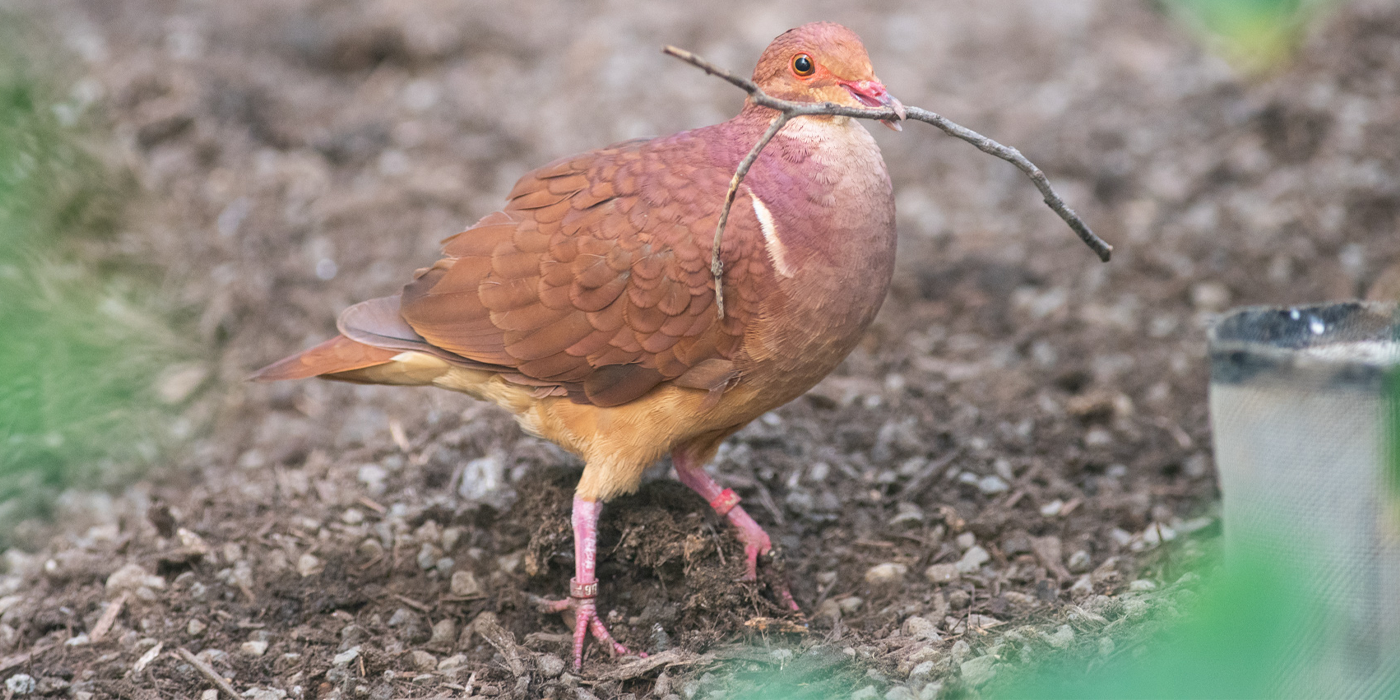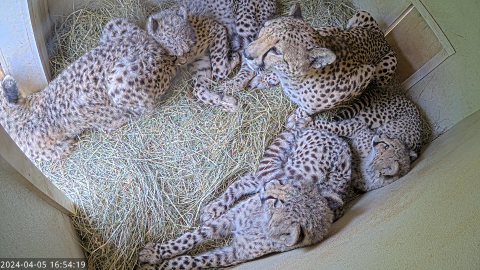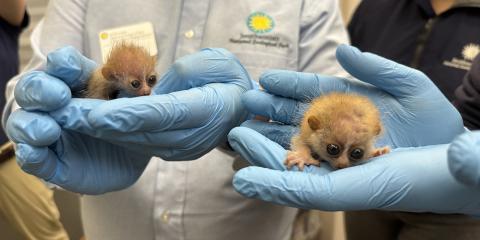Physical Description
The ruddy quail-dove is a medium-sized dove, around the same size as a common pigeon. Males and females have different feather coloring; males have rust-colored feathers on their bodies that are darker on the head and wings and lighter on the bellies and undersides. Females are patterned similarly but are more olive-gray instead of reddish-brown. Both males and females have pink legs and a pink beak, and a light-brown stripe across their face underneath their eyes.
Size
Native Habitat
Communication
Food/Eating Habits
Social Structure
Reproduction and Development
When they are ready to lay eggs, females will build a bowl-shaped nest made of twigs and leaves, which they place in a tree or a flat stump. Females lay about two eggs per clutch, and males and females take turns incubating the eggs until they hatch after about 11 days. Both parents help feed the babies, who can eat up to 22 times per day when they are first hatched! A day or two after the first pair of hatchlings leaves the nest, the female will lay another pair of eggs, and both parents will begin raising a second set of babies.
Conservation Efforts
Help this Species
- Be a smart consumer. Choose products made with sustainable ingredients, such as Smithsonian certified Bird Friendly coffees, which support farmers striving to limit their impact on wildlife and habitat.
- Consider going meat-free one day each week to help reduce the demand on the livestock industry and decrease your carbon footprint!
- Organize or attend a stream, river, lake or other waterway cleanup in your area to preserve aquatic habitats for local species.
- Conservation starts with you! Join a citizen science project, such as FrogWatch or Neighborhood Nestwatch, where you can help collect valuable data for scientists. Encourage your friends and family to get involved too.
- Plant native flowers in your garden to help feed resident and migrating pollinators. You'll make your lawn beautiful and help wildlife at the same time!


